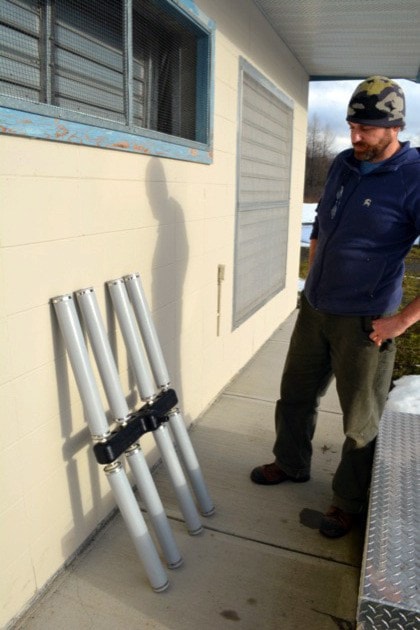The City of Terrace is taking a more conservative approach to its goal of reducing greenhouse gas emissions, opting for equipment replacement instead of new projects, to meet a commitment it made with the province dating back to 2009.
It’s using $70,000 this year earmarked to reduce its carbon footprint to instead purchase new parts for its sewage treatment plant.
The new diffusers are what disperses oxygen bubbles throughout the lagoons, fuelling the growth of sewage-eating bacteria.
The new components are 40 per cent more efficient than the current ones, but are powered by hydro electricity which is already considered a renewable energy source not overly dependant on fossil fuel burning.
The $70,000 represents two years of a commitment made by the city in signing onto the 2009 BC Climate Action Charter to spend $35,000 a year to purchase carbon offsets or to invest in renewable energy projects that would allow cities to achieve a “making progress” rank in reducing energy use.
The expenditure is revenue neutral, as it works out that municipalities get a tax rebate to make up for it.
According to the former city sustainability coordinator Tara Irwin, who is now a city planner, “the money was just available to offset the cost of the project and it was a good fit.”
Councillor Brian Downie, at the Jan. 12 council meeting in which it approved the diffuser replacement project, expressed concern that the city might not be able to show the province that it is meeting its climate commitments.
“I think it could be perceived that we are backing away from our climate action charter commitments,” Downie said. He added that being accepted for certain governmental grants depends on the Terrace following the climate charter. “There was a bit of a threat from the province,” said Downie.
The carbon offset program fell from favour with municipalities because sometimes they were forced to purchase carbon credits from companies outside of their boundaries which they were unfamiliar with.
Under that system a municipality could achieve carbon neutrality by purchasing credits generated by companies that reduce the tonnage of their own emissions in measurable amounts.
This system of trading is supposed to offer incentive for companies to reduce their carbon emissions, however companies that had a lot of money to purchase offsets seemed to have an edge over public institutions such as schools who used a lot of energy but didn’t have much back up money to draw from.
Terrace chose to put the carbon credit money into a reserve fund to spend on local renewable energy projects but city official Tara Irwin told councillors no such projects existed.
The projects have to be validated as an official sustainable project to qualify, she said.
In her report to council, Irwin told council the city did not meet its carbon neutrality goal for 2012 because of its decision not to spend on carbon offsets.
Like 79 per cent of the province’s municipalities Terrace has decided to aim for the “making progress” category. City emissions have nonetheless been trending downward, driven by building upgrades such as new windows and insulation at city hall which can also be shown to the province as efficiency improvements.
From 2007 to 2013 the number of tonnes of carbon dioxide equivalent attributed to City of Terrace activity has gone from 1,455 units to 1,228, however the 2013 emission level is slightly higher than the 2012. Irwin said that the city is nonetheless still gunning for a 22 per cent reduction by 2020.
Irwin, originally hired as the city’s sustainability coordinator, is now its planner and there is currently no such position on staff and no city committee related to environmental matters.
“While we don’t have a committee, sustainability files are shared within our planning department as they have been in the past,” said Irwin.
